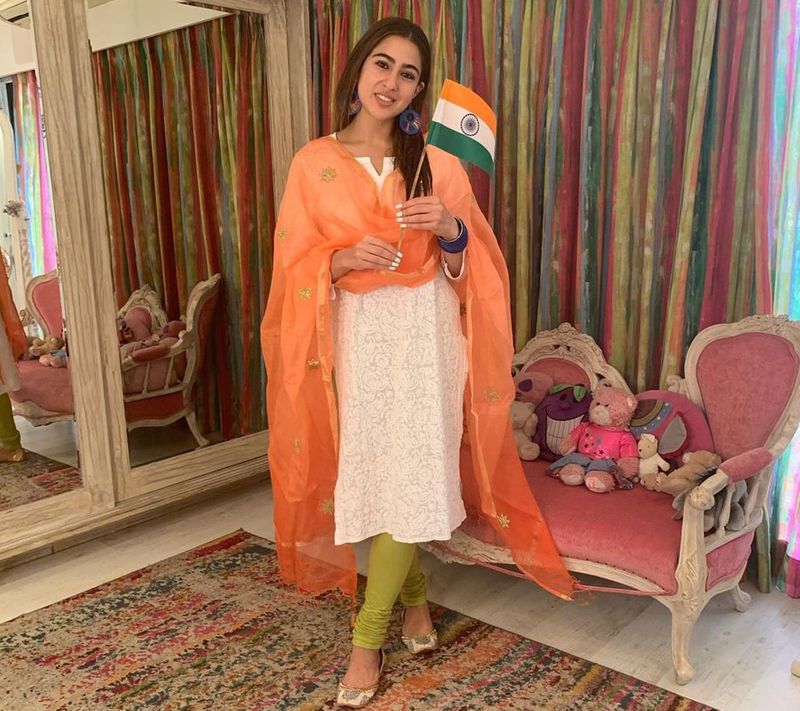From flashy weddings and festive occasions to everyday stylish comfort, Chikankari embroidery’s timeless and versatile elegance has earned it many ardent fans. The rich and intricate detailing of the true-to-the-roots Lucknowi handcraft is embraced by everyone, from the girl next door to the most stylish Bollywood celebrities. Wedding ensembles to casual kurtas, chikankari fits perfectly in every ethnic silhouette. Be it a classic chikankari saree in muted shades or a festive chikankari lehenga in bright hues, it looks equally at home in a bridal trousseau or the red carpet. So, let's trace the story of the fine embroidery craft that was born during the Mughal era and continues to enjoy pride of place in today's fashion collections.
The genesis of chikankari

The origin of chikankari embroidery can be traced back to the Mughal era. The royalty of the time predominantly preferred silhouettes like the peshwa, jama, dagla, choga and similar jacket-style ensembles. The Chikankari white-on-white embroidery handcrafted on muslin was considered a wardrobe staple of the nobles. The designs were primarily inspired by nature and featured details like creepers and flowers. The designs also had paisleys and jaali work, inspired by the stunning Mughal architecture.
Since then, chikankari embroidery has come a long way from its humble hand-crafted beginnings. With the arrival of the Industrial Revolution, mass production of chikan kurtas and other apparel robbed the craft of its true essence. Most chikankari dresses of today lack the delicate touch of hand embroidery and the authentic finesse of the art, which has been passed on through generations.
Weaving the modern era of elegance
However, true fans of chikankari embroidery understand the subtle elegance of the craft. They have steered its revival in unbelievable ways. Indian fashion has been romancing with this craft from Awadh for decades. Contemporary designers have played a significant role in making this ancient embroidery relevant to modern fashion trends. This classic aesthetic resonates with today's fashionistas and finds a coveted space in their wardrobes. Marvellous outfits with innovative interpretations of chikankari embroidery continue to revive and preserve this glorious Indian heritage.
When chikankari turned contemporary

The use od chikankari in different silhouettes such as shirts, gowns and, to an extent, in some dresses helps keep the art contemporary. Keeping the Nawabi craftsmanship alive, intricate chikankari is woven onto the grand canvas of bridal collections as well.
Patrons of chikankari understand that it is a craft of patience. Behind the unimaginably elegant and delicate shadow work is a time-consuming and laborious process. Often, an outfit with heavy chikankari embroidery can take months to be ready, sometimes even more than a year. The key lies in the finesse of the embroidery and the craftsmanship of the embroiderer. This conscious awareness has helped people appreciate chikankari embroidery even more.
Chikankari of yesterday vs tomorrow
Chikankari is versatile in every way. It can look regal yet understated, traditional yet contemporary. With signature highlights of pearl, sequins and pastel pearls, the embroidery boasts a graceful vibe. Gold and silver zardozi and beads make the chikankari embroidery more traditional and rich. Being able to create that diversity with the craft is what makes chikankari special.
Many generations of artisans in Awadh continue to work in this high-in-demand industry. The Government of India has also geotagged this pristine embroidery. So, it is only real chikankari if crafted within 200 kilometres of the Awadh region. Such efforts help to keep the craft’s authenticity alive.
Keeping the legacy intact
The more designers and people understand the craft, the more they are inspired to experiment with its motifs. Over the years, embroidery has evolved to a great extent. And the world will witness its further transformation in the future. Applying traditional designs to modern forms can give birth to an exceptional design that's not run of the mill. That's what makes chikankari couture unique.


